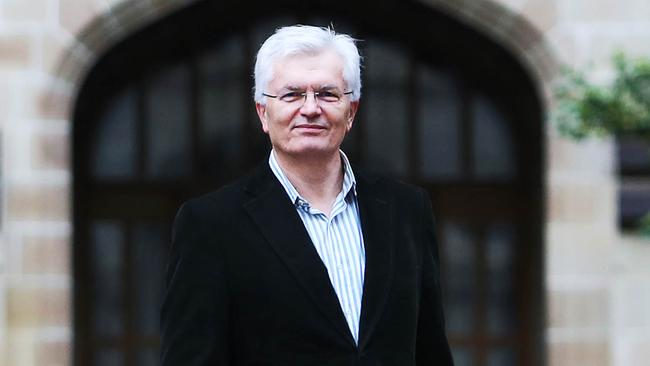PM’s Department chief Glyn Davis challenges higher education policy
Glyn Davis, Anthony Albanese’s most powerful bureaucrat, has challenged higher education policies that led to crowded, impersonal universities with over 50,000 students.

The nation’s most powerful bureaucrat has challenged the long-term direction of Commonwealth higher education policy which led to Australian universities being very large by world standards, highly reliant on international students for revenue and facing growing financial risk.
In a new essay, Prime Minister and Cabinet Department secretary Glyn Davis says that through steady reduction of public funding, a succession of federal governments “has deeded the nation a university sector that relies heavily on the families of Asia”.
The risks inherent in this approach was exposed by the pandemic, writes Professor Davis, who was vice-chancellor of the University of Melbourne from 2005 to 2018.
“Many universities now face serious debt, further research funding cuts and, in time, falling global rankings. We are yet to see a public university go bankrupt in Australia, but the possibility looms,” he writes in the essay published in a new book, Australian Universities: A Conversation about Public Good, from Sydney University Press.
Professor Davis reserves a special barb for Scott Morrison for his call, while prime minister, for universities to “consider their economic model” when faced with the loss of international students during the pandemic. He says there is no alternative model available to universities under current funding and regulatory policy.
“Mr Morrison’s injunction was not a meaningful insight about choice, but government deflecting blame about the consequences of its decisions,” he writes.
Professor Davis’s views will be critical in shaping the Albanese government’s plans for higher education reform, with the first report from a review panel due in June.
In the essay he cites figures showing that the five largest Group of Eight universities have an average enrolment of 64,328 students, nearly four times bigger than comparable universities in the UK and nearly twice as large as their US equivalents.
He also says government policy, particularly rules which require Australian universities to do research, have stopped Australia from having more diverse universities, such as the teaching-only universities in the US and Canada.
Professor Davis’s warnings about the scale of universities comes as two institutions – the University of Adelaide and the University of South Australia – are moving toward a merger which they say will be justified by the larger size of the new university which results.
In the essay, Professor Davis says the sheer size of Australian universities could make them too unwieldy to react quickly to digital disruption of the traditional education model.
“In a large organisation, management attention is stretched and enmeshed. Time to react is limited,” he writes. “New ways of working require investment. Just as an ecosystem dominated by one species is vulnerable to sudden environmental change, so a challenge from new technology will affect the entire Australian tertiary system in similar ways.
“A system with more varied institutions, some large and others small, some comprehensive and others specialist, commuter or residential, may have more scope for experimentation and rapid evolution.”
Professor Davis argues that large universities in Australia were the inevitable result of government decisions, dating from the 1990s. In order to save money, population growth was absorbed into existing universities, and the requirement for universities to conduct research also meant that more students – particularly more international students – were necessary to pay for it.
He says in the essay that Australia’s large universities have come as a cost.
“For those working in higher education, larger institutions require huge buildings on an often crowded campus, detailed reporting requirements, and management of large classes. The common complaint across the contemporary university is little time for quality teaching, research or providing support to students”.
But Professor Davis writes in the essay that changes can be made.
“This could be a moment of innovation – a time for new institutions that take advantage of pedagogical technologies to widen participation, a chance to experiment with graduate apprenticeships, trial novel aggregations of disciplines, teach in multiple languages, pursue knowledge of institutional governance,” he says.
“We can learn from the success of online learning during the pandemic, and encourage ranking systems which do more than measure research but place at least equal value on teaching quality.”




To join the conversation, please log in. Don't have an account? Register
Join the conversation, you are commenting as Logout